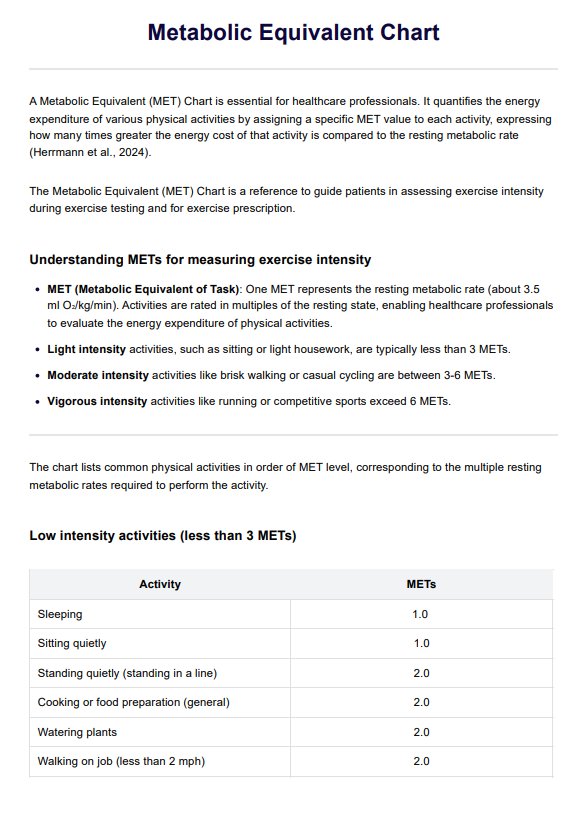MET values help healthcare providers create tailored exercise prescriptions by specifying the intensity of activities that patients can safely perform. For example, a light-intensity activity might range from 1-3 METs, moderate intensity from 3-6 METs, and vigorous intensity from 6 or more METs. By referencing a patient’s MET capacity, clinicians can safely guide them through exercises that will improve their cardiorespiratory fitness without overexertion.

Metabolic Equivalent
Access our Metabolic Equivalent Chart, a valuable reference tool in determining energy expenditure in your patient's physical activities.
Metabolic Equivalent Template
Commonly asked questions
Yes, MET values can vary depending on factors such as body weight, muscle mass, age, and fitness level. For instance, individuals with higher muscle mass may expend more energy during the same activity than someone with less. Likewise, environmental conditions like temperature and terrain can affect the MET value of activities.
The MET chart helps estimate how many calories are burned during physical activities. Since 1 MET corresponds to an energy expenditure of approximately 1 kcal per kilogram of body weight per hour, healthcare professionals can use MET values to calculate caloric consumption for various activities. For example, a 70 kg person performing a 5 MET activity for 1 hour would burn roughly 350 calories.
EHR and practice management software
Get started for free
*No credit card required
Free
$0/usd
Unlimited clients
Telehealth
1GB of storage
Client portal text
Automated billing and online payments











